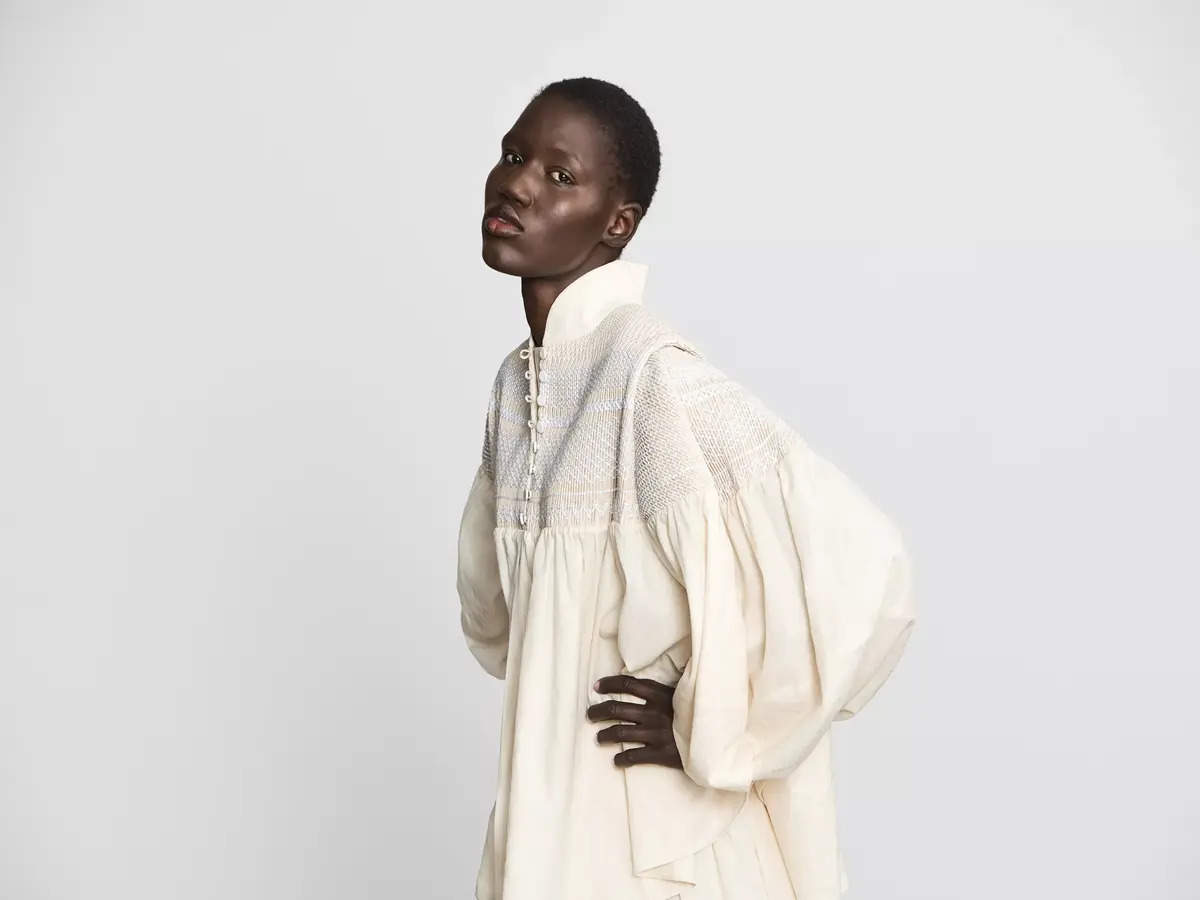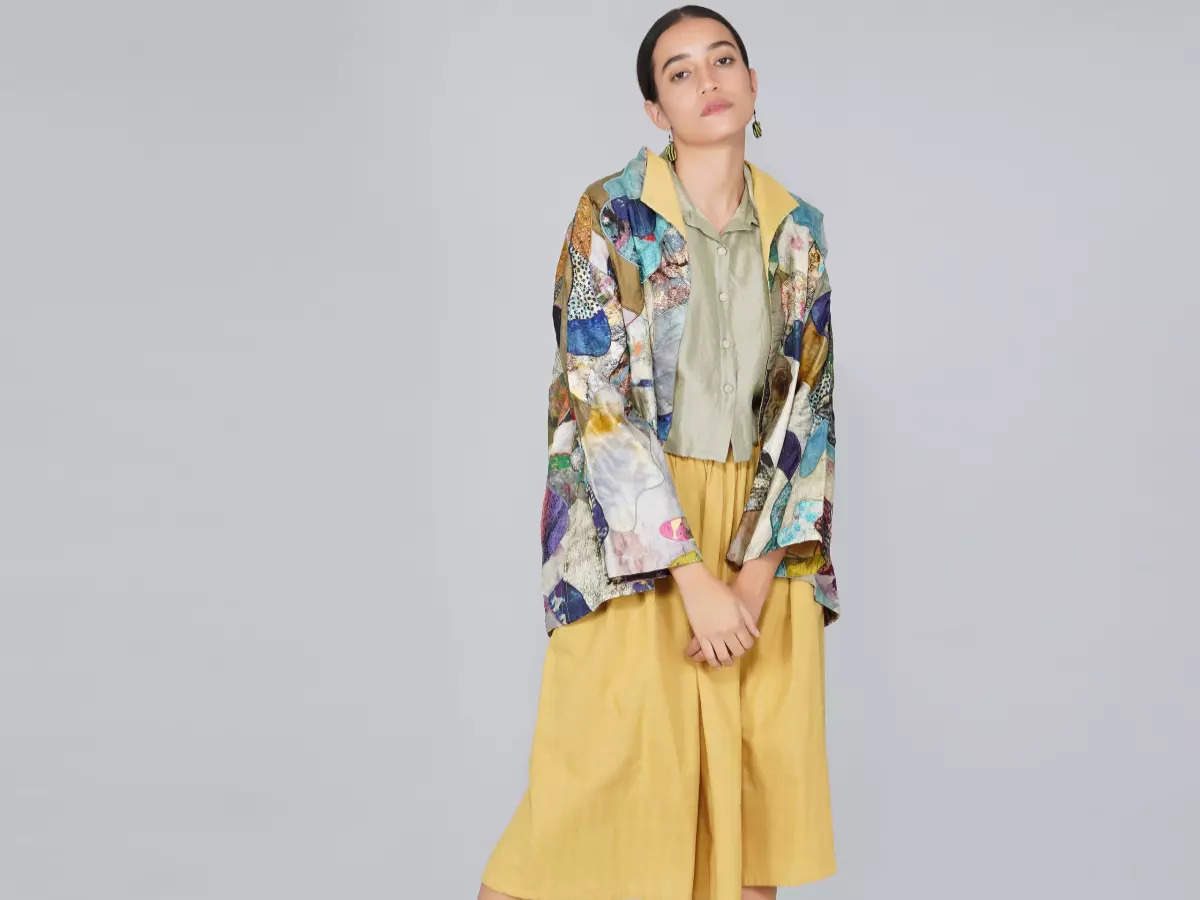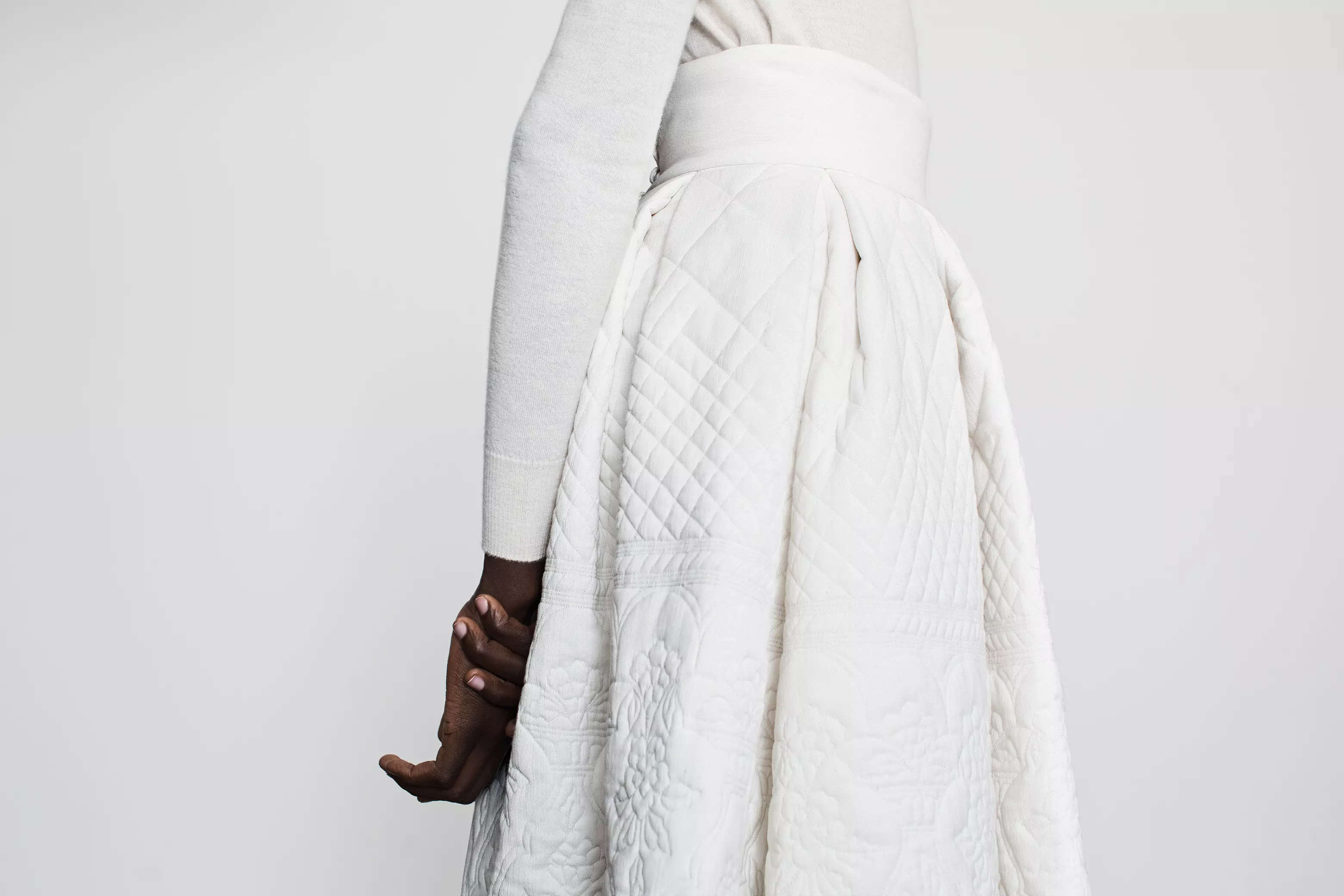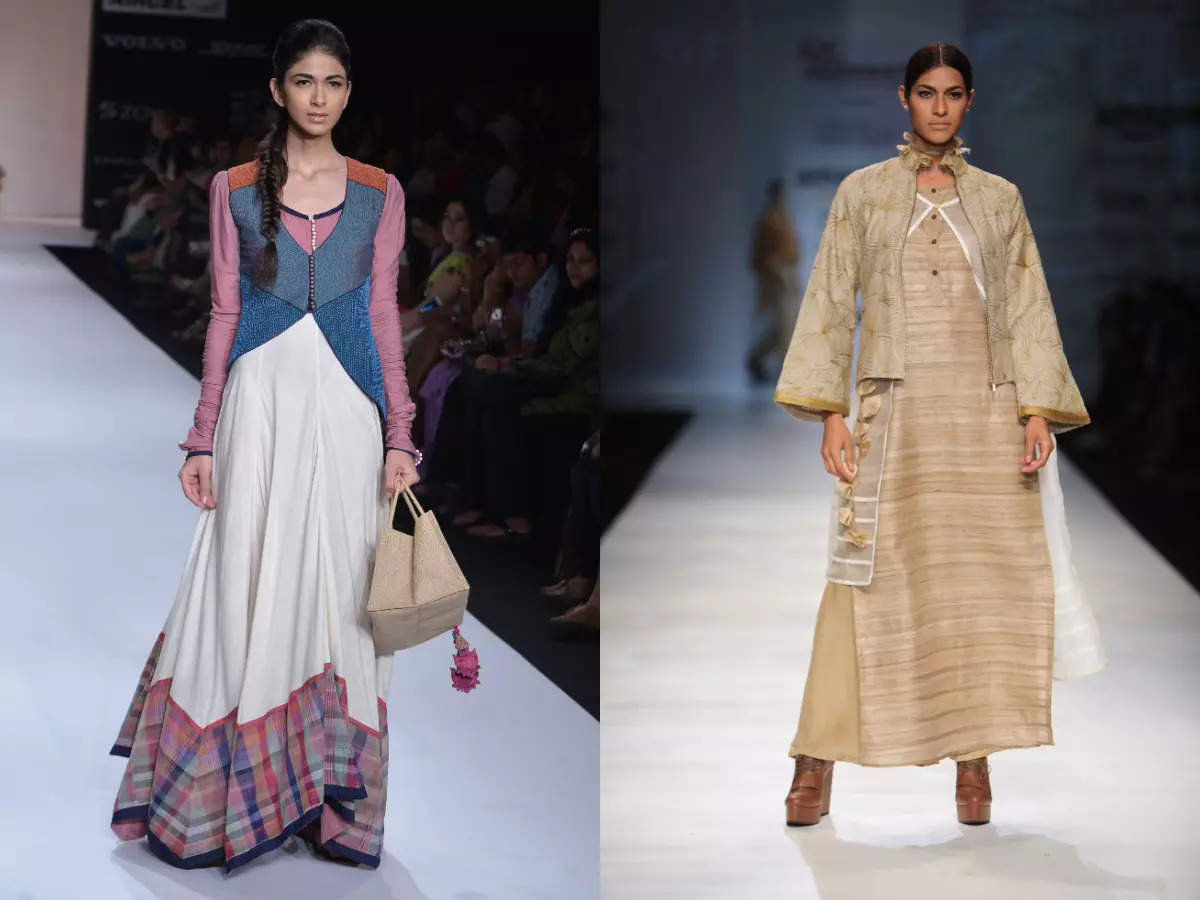
[ad_1]

Back in the day, September 22, 1927 to be precise, in Young India – a weekly paper started by Lala Lajpat Rai, Mahatma Gandhi asked the readers a pertinent question: “Do you have the Khadi spirit?” He wrote: “If we have the ‘Khadi spirit’ in us, we would surround ourselves with simplicity in every walk of life. The ‘Khadi spirit’ means illimitable patience. For those who know anything about the production of Khadi know how patiently the spinners and the weavers have to toil at their trade…The ‘Khadi spirit’ means also an equally illimitable faith…The ‘Khadi spirit’ means fellow-feeling with every human being on earth.” For Gandhi, Khadi was more than just a fabric, it was a way of life. And 73 years since his death, we need to hold on to this thread, feel designers and textile experts.
Fashion and textile curator Prasad Bidapa says that to him, Khadi and handloom textiles of India represent true luxury, deserving to be called the finest textiles in the world. “India is one of the last countries to possess such a wealth of fabrics woven by hand and reflecting a 3000-year-old history that encapsulates the traditions of our spectacular heritage,” he notes. However modern India became enamoured of machine-made textiles.
In 2015, under the guidance of the textile historian Martand Singh, Bidapa approached the Government of Rajasthan with a project called Rajasthan Heritage Week. This was an effort to make khadi and handloom fashionable and relevant again. The project hinged on creating partnerships between the textile artisans of the state with the top designers of India, and with Mahatma Gandhiji’s sesquicentennial anniversary fast approaching, the project took on an added urgency. Many designers joined the effort including the late Wendell Rodricks, Abraham & Thakore, Rajesh Pratap Singh, Rohit Bal, Rimzim Dadu, Manish Saksena, Little Shilpa and many others.
(Courtesy, Prasad Bidappa: From L to R – Woolen ensembles with bandhini tie & dye by master artisan Sitaramji/Ruma Devi creates Khadi Cotton applique on Kota Doria. Photos: Jiten Agarwal; Stylist: Anu Merton)
The Week saw some amazing innovations with Khadi. For instance, Rajesh Pratap Singh, worked with Khadi wool weavers of Barmer clusters to develop a refined version of wool; Abraham & Thakore worked with the block printers of Sanganer to create contemporary designs; Rohit Bal worked with raw khadi, processing it and then creating a beautiful embroidered bridal collection; Manish Saksena worked with Kota Doria saris from the Khaitoon clusters.
(A sepia skirt by Yavi)
INNOVATION IS KEY
What Bidapa’s Week proved is that Khadi needs a reinvention, a rethink. Many young designers are now working with the handspun fabric to craft a contemporary identity for it. From designers like Anushe Pirani who made easy breezy summer suits with it to Yadvi Aggarwal of Yavi who uses Khadi as a canvas for innovative dyeing and printing techniques. Aggarwal says, “It is only in recent times that Khadi is gaining popularity. So far it has been touted as an indigenous Gandhi fabric. Until now, its application within the country has been of rustic fabrics for the rural population. What weighs it down is the complete misunderstanding and misrepresentation of the intrinsic value of the fabric and its multitude application for genuine designer wear for luxury.”
Agrees Anita Chandramohan of Madder Much who says that Khadi has a great potential to transform into a contemporary luxe fabric. “The biggest challenge that we as brands have with Khadi is to be able to access the weavers to enrich them with new urban subtleties. As homegrown brands, the cost of sampling and designing is very high.”
(Dress by Madder Much)
UNTAPPED POTENTIAL
Sujata Keshavan, founder of Varana – a London-based brand catering to high-end global market and was recently sported by Sonam Kapoor too – says the main challenge that they have faced is the lack of awareness about handloom weaving and Khadi amongst our customers. She recounts the time she visited Premier Vision, the textile fair that caters to the garment industry in Paris, and found there was zero representation of handloom textiles. “This despite the fact that there are over ten million people working in the handloom industry in India alone,” she exclaims. The way out? “One has to do a lot of advocacy and explaining on the relevance and importance of hand woven textiles in general and Khadi in particular.”
(A Varana creation)
Recently, handlooms are getting a big push institutionally too. Aggarwal says that the concept of handloom and handwoven has such wide connotations when it comes to its application. “Its ability to absorb and remain crumpled along with the rustic texture gives it the immense value of a natural product that it stands for. As opposed to a straight fall, it has vast potential for unstructured looks which makes it unique. This feature differentiates Khadi products.”
Designer Shruti Sancheti who works extensively with Khadi says that credit goes to the designers who have revived Khadi since the last two decades and made Indians aware and fiercely proud of this elegant fabric. “I have used a lot of fresh colours and motifs and better thread counts to make my garments more contemporary, fluid and relevant for today’s generation. I love the quiet restrained luxury it offers to my design sensibilities and serves as a perfect base for handcrafted pieces,” she notes.
KHADI AND REGULATION
Khadi and KHADI is owned as a trademark by the Khadi & Village Industries Commision (KVIC). In July 2021, KVIC secured trademark registrations in three more countries – Bhutan, UAE and Mexico in addition to six earlier viz., Germany, UK, Australia, Russia, China, and EU. Apart from these countries, KVIC’s trademark applications are pending in 40 countries across the world that include USA, Qatar, Sri Lanka, Japan, Italy, and others. In 2018, KVIC asked more than 200 entities including Fabindia not to use terms such as ‘handwoven’, ‘handspun’ and ‘woven in handlooms’ without its prior permission. The idea is to prevent the misuse of the ethos of Khadi and what it stands for. But designers and brands that work with the fabric find it limiting.
Aggarwal says that the KVIC and its marketing campaign appears to be a bit detrimental for the growth of the fabric as such. “Instead of encouraging designers to promote their innovation and assist them, KVIC is willing to sue people who used the word Khadi,” she notes. Khadi, she contends is a generic word for handloom, handwoven fabric.
Agrees Keshavan, who feels that this appropriation of the word Khadi is misguided, adding that even Mahatma Gandhi did not restrict the weaving of Khadi or the use of its name to any group, association or commission. She asks: “When Indian designers now use hand spun and hand woven fabric, what are they supposed to call it, so that they can be understood? People are being forced to use convoluted descriptions as no other single word will suffice. They could for example introduce instead geographic appellations like “PonduruKhadi” or “Phulia Khadi”, but claiming exclusive ownership of the term is counter-productive and difficult to monitor at a national level with thousands of producers.” Chandramohan says that as long as it’s mentioned as an indigenous fabric that represents the Swaraj Movement, we should wear the tag proudly.
(Creations by Shruti Sancheti)
However, Sancheti says that some regulation is needed, “It is imperative to lay down standards and regulations to maintain the impeccable quality of this handcrafted fabric or else sometimes inferior or blended products are passed off as khadi.”
OUR HOMEGROWN LUXURY
Khadi, on its own, can be India’s answer in global luxury – a versatile fabric with a restrained opulence and a subtle charm. Sancheti adds, “Khadi is already a premium fabric and with the design intervention and backing of relevant bodies, it can soon be a super luxurious premium fabric as the fabric has qualities which can make it global.” Aggarwal agrees and feels that Khadi can easily replace all others as an ultra-luxury fabric. What it needs is effective promotions. “It is not that the current breed of designers can’t give Khadi the luxury status it deserves but for promoting Khadi, we believe that KVIC should hold a consultative session with the designers and implement their suggestions.”
Khadi definitely has a unique history and identity intimately connected to India. Keshavan says, “An entirely handmade process, it signifies true luxury as it reveals the hand of the weaver, such that no two metres are identical. It is the antithesis of mass produced luxury. However the question is really one of design: what one actually does or creates, using Khadi. To elevate Khadi to appeal to discerning customers of luxury, one has to create end products of modern, sophisticated design.”
The need is to appreciate the handweaving traditions of India. As Bidapa says, “For me, a designer who fails to recognise the unique aspects of handwoven fabric, choosing instead to buy mass-produced Chinese imports is little more than a tailor, contributing nothing towards a sustainable future. This is where Gandhiji would have liked to see Khadi – celebrated globally as the finest of what India has to offer.” After all, in Khadi, we trust.
[ad_2]
Source link





